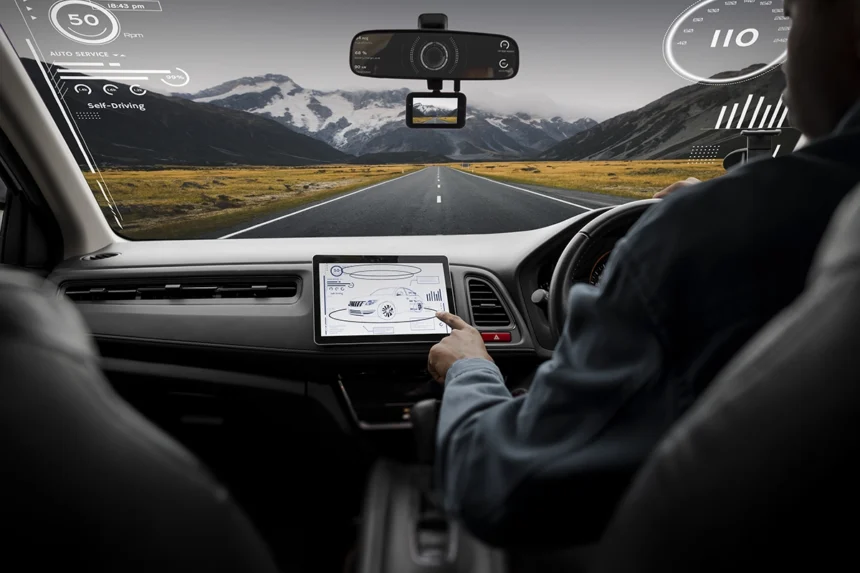Have you ever wondered how companies manage large fleets of vehicles so efficiently? How do they ensure driver safety, keep operational costs low, and maintain vehicle health without constant manual oversight? The answer lies in telematics.
Telematics transforms fleet management by leveraging technology to boost efficiency, enhance safety, and reduce costs. In this article, we will explore how telematics is revolutionizing fleet management, providing you with a comprehensive guide on its benefits and applications.
What is Telematics?
Telematics combines telecommunications and informatics, enabling the collection, transmission, and analysis of data from vehicles. This technology integrates GPS tracking, onboard diagnostics, and wireless communications to offer real-time insights into vehicle performance, location, and usage.
Primary Components of Telematics:
- GPS Tracking: Provides real-time location data.
- Onboard Diagnostics (OBD): Monitors vehicle health and performance.
- Wireless Communication: Transmits data to a central system for analysis.
How Telematics Enhances Fleet Management
Telematics has a profound impact on fleet management, transforming how fleets operate on multiple levels. Let’s delve into the specific areas where telematics makes a difference.
1. Vehicle Tracking
One of the most significant advantages of telematics is real-time vehicle tracking. Fleet managers can monitor the exact location of every vehicle, enabling better route planning and dispatching.
- Improved Route Planning: Optimize routes to reduce travel time and fuel consumption.
- Enhanced Security: Locate stolen vehicles quickly.
2. Driver Safety
Telematics systems promote driver safety by monitoring driving behavior and providing feedback.
- Behavior Monitoring: Track speeding, harsh braking, and rapid acceleration.
- Driver Coaching: Offer real-time feedback and training programs to improve driving habits.
3. Fuel Efficiency
Fuel costs are a major expense for fleets. Telematics helps in optimizing fuel use.
- Fuel Consumption Reports: Analyze fuel usage patterns.
- Idle Time Reduction: Minimize unnecessary idling to save fuel.
4. Predictive Maintenance
Regular maintenance is crucial for fleet health. Telematics enables predictive maintenance by monitoring vehicle conditions and predicting issues before they occur.
- Maintenance Alerts: Receive alerts for scheduled and necessary maintenance.
- Reduced Downtime: Prevent breakdowns and costly repairs by addressing issues early.
5. Operational Costs
Overall operational costs can be significantly reduced with telematics.
- Reduced Fuel Costs: Optimize routes and reduce idling.
- Lower Insurance Premiums: Insurance companies often offer lower premiums for telematics-equipped fleets due to improved safety records.
Case Studies: Real-World Applications of Telematics
Let’s look at how some companies have successfully implemented telematics to transform their fleet management:
Case Study 1: Delivery Services Company
A national delivery service company implemented telematics to monitor their fleet of over 1,000 vehicles. They achieved the following results:
- 30% Reduction in Fuel Costs: Through optimized routing and reduced idling.
- 40% Decrease in Accidents: With improved driver behavior monitoring and training.
- 20% Improvement in Delivery Times: Due to better route planning and real-time tracking.
Case Study 2: Construction Company
A construction company used telematics to manage their fleet of heavy equipment and vehicles. The outcomes included:
- 25% Reduction in Maintenance Costs: By utilizing predictive maintenance alerts.
- 50% Increase in Equipment Utilization: Through efficient tracking and deployment.
- 15% Decrease in Fuel Consumption: With better monitoring of fuel usage and idle time.
How to Implement Telematics in Your Fleet
Step 1: Assess Your Needs
Evaluate your fleet’s specific needs. Consider the size of your fleet, types of vehicles, and key performance metrics.
Step 2: Choose the Right Telematics Solution
Select a telematics provider that offers the features and support that align with your fleet’s needs.
Step 3: Install and Integrate
Install the necessary hardware and integrate the software with your existing systems. Ensure that the installation process does not disrupt your operations.
Step 4: Train Your Team
Provide comprehensive training to your drivers and fleet managers on how to use the telematics system effectively.
Step 5: Monitor and Optimize
Regularly monitor the data and use it to make informed decisions. Continuously optimize your operations based on the insights gained from telematics.
Frequently Asked Questions (FAQs)
What is telematics in fleet management?
Telematics in fleet management refers to the use of technology to collect, transmit, and analyze data from fleet vehicles, providing real-time insights into vehicle performance, location, and driver behavior.
How does telematics improve driver safety?
Telematics improves driver safety by monitoring driving behavior, such as speeding and harsh braking, and providing real-time feedback and training to encourage safer driving habits.
Can telematics reduce fuel costs?
Yes, telematics can reduce fuel costs by optimizing routes, reducing idle time, and monitoring fuel consumption patterns to identify areas for improvement.
What is predictive maintenance in telematics?
Predictive maintenance in telematics involves using data from vehicle diagnostics to predict and address maintenance issues before they lead to breakdowns, reducing downtime and repair costs.
How do I choose the right telematics solution for my fleet?
Choose a telematics solution that offers the features you need, such as GPS tracking, driver behavior monitoring, and maintenance alerts. Consider the provider’s support and integration capabilities as well.
READ MORE : Latest in Car Audio Tech: Best Systems of 2024
Conclusion
Telematics is transforming fleet management, offering numerous benefits such as improved efficiency, enhanced safety, and reduced operational costs. By leveraging real-time data and advanced analytics, fleet managers can make informed decisions that optimize their operations.
Thank you for reading! Stay updated with the latest trends in telematics and fleet management by following us on social media, subscribing to our newsletters, and enabling push notifications. Join our community and never miss an update.











